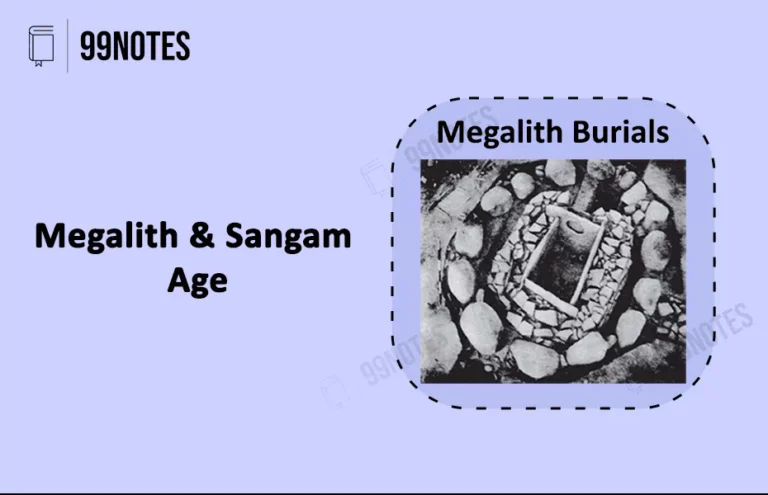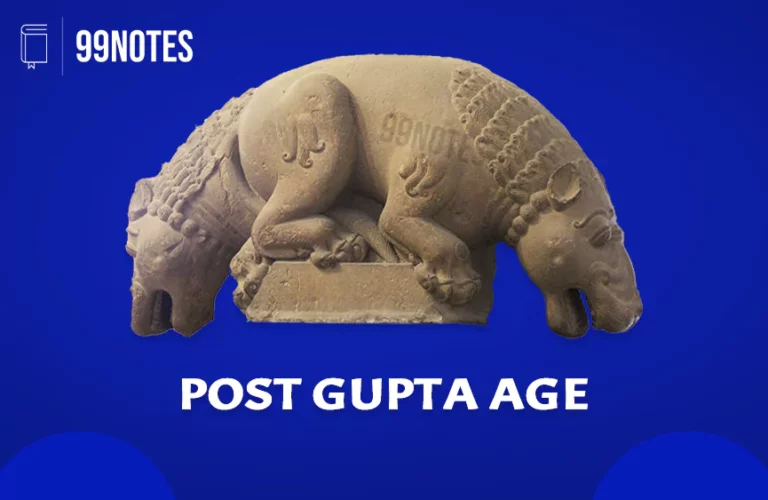Stone Age – Paleolithic, Mesolithic, Neolithic History
The Stone age refers to the prehistoric period during which stone tools were the most prevalent form of articles used by early man. The use of stone tools started about 2.5 million years ago with the arrival of the early humans (‘Homo Habilis’ and Australopithecus). They were one of the earliest bipedal primates and used tools to hunt primarily.
The Stone age is classified as following based on the type and technology of stone tools used –
- Palaeolithic age (Old Stone Age) – from 2.5 million years ago to 12,000 years ago. Based on stone tools used by humans and changes in climate, it is further divided into the followings: –
- Lower palaeolithic (Early palaeolithic age)-dating2,500,000 to 300,000 years ago
- Middle palaeolithic – dating 300,000 to 30,000 years ago
- Upper Palaeolithic – dating 30,000 to 12,000 years ago
- Mesolithic (Middle Stone Age) – dating from the Last glacial maximum till the final period of hunter-gatherer culture
- Neolithic (New Stone Age) – dating12,000 years ago to around 6,500 years ago
Making of stone tools-
A stone was shaped using an edge, a point, or a percussion surface, to make it usable.
- Firstly, a base is formed to allow the worker to place the rough stone flat on a surface.
- Then, blade flakes are removed to sharpen the stone from one end. In the end, after some retouching, the stone tool is ready to be used.
Now let’s see the features of each age in some detail.
The Palaeolithic age (Old Stone Age)
Palaeolithic is made from two Greek words, palaios and lithos, meaning old and stone, respectively. Palaeolithic age dates from 2.5 million years ago to 12,000 years ago. Around 2.5 million years ago, the earliest form of the genus homo, such as homo habilis, started using stone tools.
Features of Palaeolithic age –
- Shelter: Humans lived in open or in caves.
- Hunting and Gathering: They hunted wild animals for meat and gathered food from plants.
- Tools: Unpolished tools made of stone, wood and bone.
Classification of the Palaeolithic Age
- Lower Palaeolithic Age: It dates from dating 2,500,000 to 300,000 years ago. We see the following developments in this age.
- Tools used – Tools were rough and heavy. Tools-Hand axes, Cleavers and choppers.
- Communication – Advent of verbal and non-verbal communication. Humans were now capable of making a small number of animal-like sounds.
- Major sites include – Didwana(Rajasthan), Bhimbetka(M.P), Belan valley(UP), Soan river valley(Punjab)
- Middle Palaeolithic Age: It dates from 300,000 to 30,000 years ago.
- The Flake tool industry sets this age apart from the lower Palaeolithic age. These tools were smaller, lighter and thinner, for example, blades, pointers, scrapers and borers.
- Technology – People learned fire.
- Food- They started to cook food before eating due to the invention of fire. This enabled a greater consumption of calories to satisfy the needs of a larger brain.
- Homo Sapiens and Homo Neanderthalensis appeared in the Middle Palaeolithic age.
- Major sites in India- Luni valley (Rajasthan), Potwar Plateau (between Indus & Jhelum), Bhimbetka (M.P), Tungabhadra river valley, Chirki- Nevasa(Maharastra)
- Upper PalaeolithicAge: It dates from 30,000 years ago to 12,000 years ago.
- It coincided with the last phase of the last ice age; therefore, the climate became comparatively warmer and less humid.
- Communication – Spoken language could develop in the Upper Paleolithic age due to the larger brain and an improved vocal cord.
- Tools used – We see several innovations in bone tools. More sophisticated and distinct tools were used, such as projectile points, engraving tools, knife blades, drilling and piercing tools, bone tools, needles, harpoons, parallel-sided blades, fishing tools and burin (a handheld tool used for engraving).
- Art – We see a large number of wall paintings with human figurines. With this, Magic and religion entered human life.
- Major sites in India- Bhimbhetka, Belan, Chota Nagpur plateau (Bihar), Renigunta in Chittoor and Kurnool, Muchchatla Chintamani Gavi in Andhra Pradesh and Imamgaon in Maharashtra.
The Mesolithic Age (Middle Stone Age)
‘Mesolithic’ comes from two Greek words, ‘mesos’ and ‘lithos’, meaning middle and stone, respectively. It starts from the Last glacial maximum till the final period of hunter-gatherer culture.
Features of the Mesolithic age
- In the Holocene era, there was an abrupt rise in temperature, which resulted in changes in flora and fauna. This led to various changes in human settlements, marking the Mesolithic age.
- Tools – The use of microliths was prevalent in the Mesolithic age. These are miniature stone tools, usually made of crypto-crystalline silica, chalcedony or chert, both geometrical and non-geometrical shapes.
- Food – The Mesolithic age ended with the starting of the cultivation of plants and the domestication of animals. The first animal domesticated was an ancestral dog.
- Shelters and clothing – They lived in semi-permanent homes such as caves and started to wear animal skin as clothes..
- Religion – The burial practices indicate a belief in the afterlife, as the dead were often buried with some food items and other goods.
- Art – Cave painting in this age is a widespread phenomenon. There is some evidence of the use of pottery too.
- Important sites in India- Adamgarh(M.P) and Bagor in Rajasthan – earliest domestication of animals. Bhimbetka caves (Madhya Pradesh), Kharwar, Jaora and Kathotia (M.P), Sundargarh and Sambalpur (Odisha), Ezhuthu Guha (Kerala). Langhnaj (Gujarat), Sarai-Nahar-Rai (Pratapgarh U.P), Paisara(Munger Bihar).
The Neolithic Age (New Stone Age)
‘Neolithic’ comes from two Greek words, neos and lithos, meaning new and stone, respectively. It dates from 12,000 years ago to around 6,500 years ago. This age also coincided with the Holocene era. This age marks a profound change in the culture and behaviour of humans, such as humans starting to produce food.
Features of Neolithic age: –
- Tools – polished or ground stone tools replaced the flaked tools. We find microlith-blades, polished stones, and weapons made of bones – such as needles, scrapers, borers, and arrowheads.
- Food – People started cultivating lands. They grew fruits and domesticated cattle, goats and sheep.
- Art – A larger variety of scenes were depicted in cave paintings.
- Shelter – People started a settled life. We find evidence of rectangular or circular houses.
- Clothing – Clothes were made of animal skin; in later stages, wool might have been used.
- Important Neolithic sites in India –
| Sites | Region | Features |
| Koldihwa and Mahagara | South of Allahabad | Evidence of circular huts; evidence of rice; |
| Mehrgarh | Balochistan | Houses built of sun-dried bricks and crops like cotton and wheat; |
| Burzahom | Kashmir | Graves of people with their domesticated dogs; People lived in pits; |
| Gufkral | Kashmir | Pit dwelling |
| Chirand | North of Patna | A continuous settlement from the Neolithic age to the Iron age. |
| Piklihal, Brahmagiri, Maski, Takkalakota, Hallur | Karnataka | Domestication of sheep and goats; we also find Ash mounds; |
| Belan Valley | Mirzapur | Cave Paintings in the hills of Vindhya Range |







